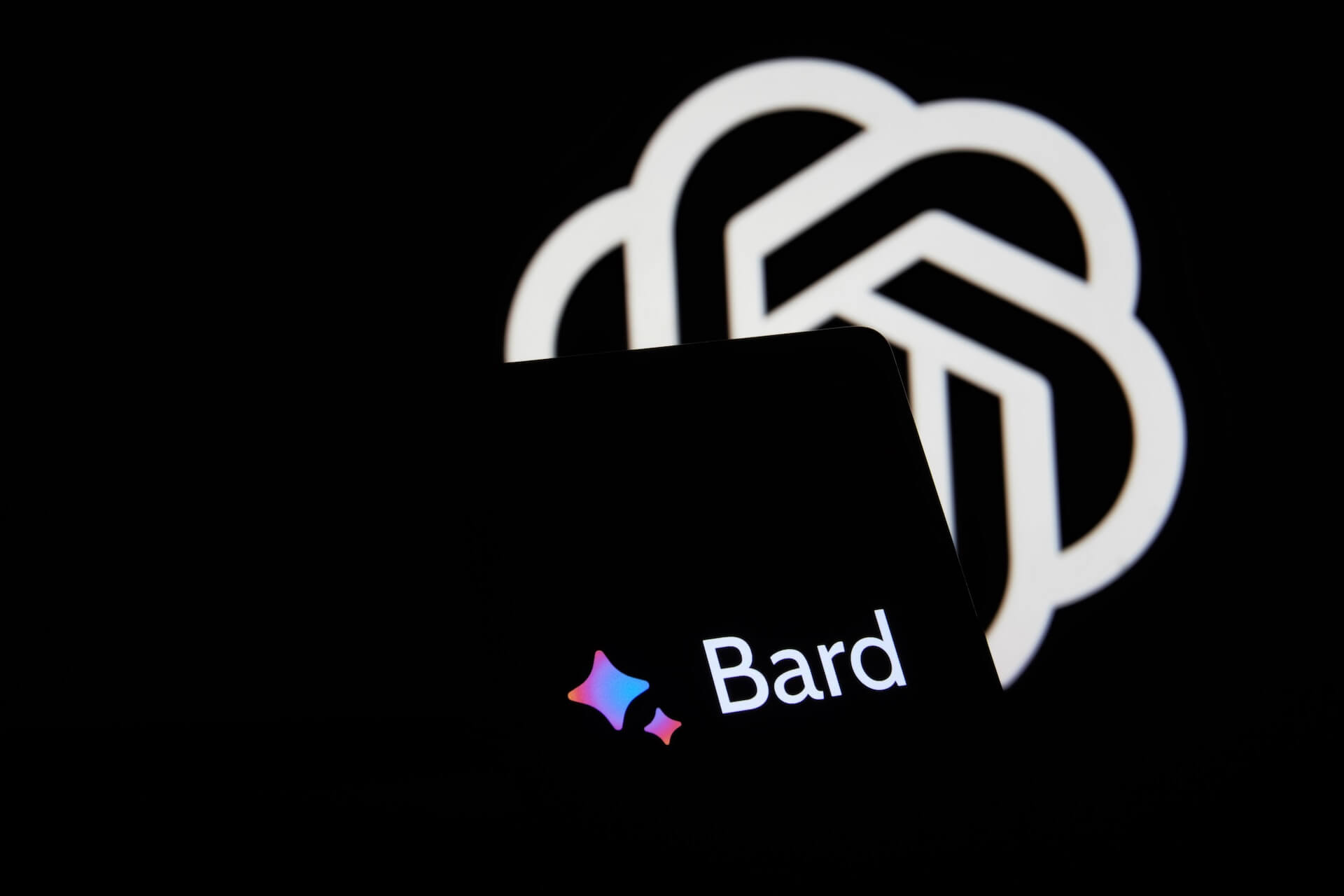The Revolution of AI Language Models

In the dynamic world of artificial intelligence, the year 2023 has ushered in remarkable advancements in AI language models. Major players in the field have unveiled cutting-edge creations that are reshaping the way machines comprehend and generate human-like text.
OpenAI’s GPT-4: A Quantum Leap in Text Generation
OpenAI’s GPT-4 is a large language model that is much more powerful than its predecessor, GPT-3. GPT-4 has 175 billion parameters, which is about 10 times more than GPT-3. This means that GPT-4 can learn and process information much more efficiently, and it can generate more complex and nuanced text.
For example, GPT-4 can generate text that is indistinguishable from human-written text. It can also answer questions in a more comprehensive and informative way. Additionally, GPT-4 can be used to create different creative text formats, such as poems, code, scripts, musical pieces, emails, letters, etc.
Overall, GPT-4 is a major breakthrough in the field of artificial intelligence. It has the potential to revolutionize the way we interact with computers and the way we communicate with each other.
Here are some specific examples of what GPT-4 can do:
- It can generate text that is indistinguishable from human-written text. For example, it can write news articles, blog posts, and even poems that are so realistic that it is difficult to tell them apart from human-written text.
- It can answer questions in a more comprehensive and informative way. For example, if you ask GPT-4 “What is the meaning of life?”, it can give you a detailed answer that takes into account different philosophical perspectives.
- It can create different creative text formats. For example, it can write poems, code, scripts, musical pieces, emails, letters, etc.
GPT-4 is still under development, but it has the potential to be a powerful tool for a variety of applications. It could be used to improve the quality of customer service, generate creative content, or even help us to better understand the world around us.
Google AI’s PaLM 2 (Bison-001): Redefining Multitasking
Google AI’s PaLM 2 (Bison-001) is a large language model that is much more powerful than its predecessor, PaLM 1. PaLM 2 has 540 billion parameters, which is about three times more than PaLM 1. This means that PaLM 2 can learn and process information much more efficiently, and it can perform a wider range of tasks.
For example, PaLM 2 can generate text, translate languages, write different kinds of creative content, and answer your questions in an informative way. It can also learn new tasks quickly and easily.
Overall, PaLM 2 is a major breakthrough in the field of artificial intelligence. It has the potential to revolutionize the way we interact with computers and the way we communicate with each other.
Here are some specific examples of what PaLM 2 can do:
- It can generate text that is indistinguishable from human-written text. For example, it can write news articles, blog posts, and even poems that are so realistic that it is difficult to tell them apart from human-written text.
- It can translate languages accurately and fluently. For example, it can translate a text from English to French or from Spanish to Chinese with a high degree of accuracy.
- It can write different kinds of creative content, such as poems, code, scripts, musical pieces, emails, letters, etc.
- It can answer your questions in an informative way, even if they are open-ended, challenging, or strange.
- It can learn new tasks quickly and easily. For example, if you teach it how to play a game, it can learn the rules of the game and start playing it within a few minutes.
PaLM 2 is still under development, but it has the potential to be a powerful tool for a variety of applications. It could be used to improve the quality of customer service, generate creative content, or even help us to better understand the world around us.
Microsoft’s Turing NLG: The Informative Maestro
Microsoft’s Turing NLG is a large language model that is designed to be informative and comprehensive. It is trained on a massive dataset of text and code, which means that it has a deep understanding of the world. This allows it to generate different creative text formats, like poems, code, scripts, musical pieces, emails, letters, etc., that are both accurate and engaging.
For example, Turing NLG can be used to generate:
- Poems that are both creative and meaningful.
- Code that is both correct and efficient.
- Scripts that are both entertaining and informative.
- Musical pieces that are both beautiful and original.
- Emails that are both clear and concise.
- Letters that are both personal and heartfelt.
Turing NLG is still under development, but it has the potential to be a powerful tool for a variety of applications. It could be used to improve the quality of customer service, generate creative content, or even help us to better understand the world around us.
Here are some specific examples of how Turing NLG can be used:
- A customer service representative could use Turing NLG to generate personalized responses to customer inquiries.
- A marketing team could use Turing NLG to create engaging and informative content for their website or social media channels.
- A teacher could use Turing NLG to generate personalized learning materials for their students.
- A writer could use Turing NLG to help them brainstorm ideas for new stories or articles.
- A scientist could use Turing NLG to help them analyze data or generate hypotheses.
Turing NLG is a powerful tool that has the potential to be used in a variety of ways. As it continues to develop, we can expect to see even more innovative and creative applications for this technology.
DeepMind’s Gato: Versatility Beyond Expectations
DeepMind’s Gato is a large language model that is designed to be versatile. It can perform a wide range of tasks, including:
- Playing Atari games.
- Controlling robotic arms.
- Generating creative content, such as poems, code, scripts, musical pieces, emails, letters, etc.
- Answering your questions in an informative way, even if they are open-ended, challenging, or strange.
Gato is able to perform these tasks without any additional training. This is because it is trained on a massive dataset of text and code that covers a wide range of topics. This allows Gato to learn the underlying patterns of language and behavior, which it can then use to perform a variety of tasks.
Gato is still under development, but it has the potential to be a powerful tool for a variety of applications. It could be used to:
- Improve the performance of robots and other machines.
- Create new forms of entertainment and education.
- Help us to better understand the world around us.
Gato is a truly groundbreaking achievement in the field of artificial intelligence. It is a sign of the progress that is being made in this field, and it is an exciting glimpse into the future of AI.
Here are some specific examples of how Gato can be used:
- A robotics company could use Gato to train robots to perform complex tasks, such as picking and placing objects or navigating a cluttered environment.
- A game developer could use Gato to create more realistic and engaging games.
- A teacher could use Gato to create personalized learning experiences for their students.
- A scientist could use Gato to help them analyze data or generate hypotheses.
Gato is a powerful tool that has the potential to be used in a variety of ways. As it continues to develop, we can expect to see even more innovative and creative applications for this technology.
Hugging Face’s Jurassic-1 Jumbo: Unprecedented Magnitude
Hugging Face’s Jurassic-1 Jumbo is a large language model that is the largest to date. It has 1.75 trillion parameters, which is about 10 times more than the previous largest language model, GPT-4. This means that Jurassic-1 Jumbo can learn and process information much more efficiently, and it can perform a wider range of tasks.
Jurassic-1 Jumbo is still under development, but it has the potential to be a powerful tool for a variety of applications. It could be used to:
- Generate text that is indistinguishable from human-written text.
- Translate languages accurately and fluently.
- Write different kinds of creative content, such as poems, code, scripts, musical pieces, email, letters, etc.
- Answer your questions in an informative way, even if they are open-ended, challenging, or strange.
- Learn new tasks quickly and easily.
Jurassic-1 Jumbo is a truly groundbreaking achievement in the field of artificial intelligence. It is a sign of the progress that is being made in this field, and it is an exciting glimpse into the future of AI.
Here are some specific examples of how Jurassic-1 Jumbo can be used:
- A customer service representative could use Jurassic-1 Jumbo to generate personalized responses to customer inquiries.
- A marketing team could use Jurassic-1 Jumbo to create engaging and informative content for their website or social media channels.
- A teacher could use Jurassic-1 Jumbo to generate personalized learning materials for their students.
- A writer could use Jurassic-1 Jumbo to help them brainstorm ideas for new stories or articles.
- A scientist could use Jurassic-1 Jumbo to help them analyze data or generate hypotheses.
Jurassic-1 Jumbo is a powerful tool that has the potential to be used in a variety of ways. As it continues to develop, we can expect to see even more innovative and creative applications for this technology.
The colossal size of Jurassic-1 Jumbo paves the way for an expanded realm of text generation and comprehension. It can be used to generate more complex and nuanced text, and it can also understand and respond to more complex queries. This could lead to new applications in areas such as machine translation, question-answering, and creative writing.
Overall, Jurassic-1 Jumbo is a major breakthrough in the field of artificial intelligence. It has the potential to revolutionize the way we interact with computers and the way we communicate with each other.
Unveiling the Evolution of Computing Power: From Counting Tools to Quantum Marvels
Beyond Text: Pioneering New Horizons
The innovation journey of AI language models goes beyond the number of parameters. Researchers have harnessed the potential of these models to transcend traditional boundaries. Language models now generate captivating poetry, intricate code, facilitate seamless language translation, and furnish enlightening answers, transcending their original roles.
In the past, language models were primarily used for text generation and translation. However, recent advances have made it possible for these models to perform a wider range of tasks, such as:
- Generating creative content, such as poems, code, scripts, musical pieces, emails, letters, etc.
- Answering your questions in an informative way, even if they are open-ended, challenging, or strange.
- Learning new tasks quickly and easily.
- Translating languages accurately and fluently.
- Understanding and responding to natural language commands.
These advances are opening up new possibilities for the use of AI language models. For example, they could be used to:
- Create more engaging and personalized learning experiences.
- Develop new forms of entertainment and education.
- Improve the performance of robots and other machines.
- Help us to better understand the world around us.
The possibilities are endless, and the future of AI language models is very exciting.
The phrase “Beyond Text: Pioneering New Horizons” refers to the fact that AI language models are no longer limited to generating and translating text. They are now capable of performing a wider range of tasks, and they are constantly being developed to do even more. This is opening up new possibilities for the use of AI language models in a variety of fields.
Navigating the AI-Language Model Landscape
The field of AI language models is constantly evolving, and the possibilities for their use are endless. As we embrace the potential of these breakthroughs, the horizon holds promise. These advancements merely scratch the surface of what AI language models can achieve. With each stride forward, the boundaries of technology’s interaction with human language continue to expand, shaping a future where machines engage with us more intuitively and insightfully.
Here are some of the ways that AI language models are being used today:
- Generating creative content: AI language models can be used to generate creative content, such as poems, code, scripts, musical pieces, emails, letters, etc. This is being used to create new forms of entertainment and education and to help businesses create more engaging marketing materials.
- Answering questions: AI language models can be used to answer questions in an informative way, even if they are open-ended, challenging, or strange. This is being used to improve the customer service experience and to help people learn new things.
- Translating languages: AI language models can be used to translate languages accurately and fluently. This is being used to break down language barriers and to help people communicate with each other more easily.
- Understanding and responding to natural language commands: AI language models can be used to understand and respond to natural language commands. This is being used to develop new forms of human-computer interaction and to make it easier for people to use technology.
These are just a few of the ways that AI language models are being used today. As technology continues to evolve, we can expect to see even more innovative and creative applications for this technology.
The phrase “Navigating the AI-Language Model Landscape” refers to the fact that the field of AI language models is constantly changing. There are many different models available, and each one has its own strengths and weaknesses. It is important to be able to navigate this landscape and choose the right model for the task at hand.
In Summation: A Trail of Progress
The field of AI language models is undergoing a major transformation. GPT-4, PaLM 2, Turing NLG, Gato, and Jurassic-1 Jumbo are the trailblazers, propelling us into an era where machines can understand and speak our language with greater comprehension. As we continue on this journey, these models will evolve from tools into companions, enriching our digital experiences in ways we never imagined.
This is just a glimpse of the exciting developments that are happening in the field of AI language models. As research in this area continues, we can expect to see even more powerful and capable language models being developed in the near future. These models have the potential to revolutionize the way we interact with computers and the way we communicate with each other. We can only imagine what the future holds for this technology.
Unveiling the World of ChatGPT: A Powerful AI Language Model




